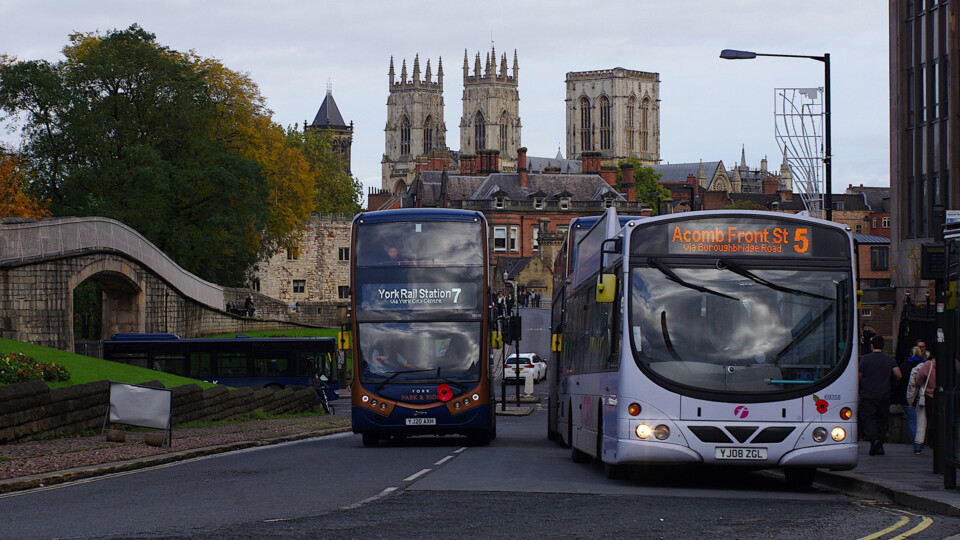Accessibility, sustainability and connectivity at the heart of York’s future transport plans
A detailed plan to deliver York’s future transport network has been released ahead of a City of York Council Executive meeting on 14 November.
Elected Members will discuss the Local Transport Strategy’s (LTS) Implementation Plan, which has been produced following the adoption of the LTS itself in July 2024. The Implementation Plan sets out the first two years of delivery for the Strategy across York’s centre, villages and suburbs, and commits to engagement and consultation with residents throughout.
Packages laid out in the papers include short, medium and long term measures all applied within the new Transport Hierarchy and our commitments to Equalities and Human Rights, and to the Social Model of Disability.

Among them are;
- Additional Blue Badge car parking; installation of new seating; increasing the number of wheelchair spaces on buses. We will also seek funding to replace the Dial a Ride service
- Bus priority routes to create more reliable and attractive bus services, including a City Centre Sustainable Transport Corridor; using traffic signals to reinforce bus priority
- Reviewing speed limits and implementation of 20mph in those streets and areas where people may benefit
- Implementing a parking strategy to make best use of York’s limited highway space, and encouraging visitors to use our Park and Ride
- Repairing and maintaining pavements and cycle paths to create year-round safe, connected routes for walking, wheeling and cycling
- Identifying and creating a trial sustainable travel neighbourhood, a trial active travel radial route and a trial sustainable travel village.
The Implementation Plan will begin the process of adapting our transport networks as York’s population grows, and as pressures on both finances and the transport network increase. It specifies which schemes and measures are already funded and some for which funding will be sought and also includes an outline for taking the city beyond 2026.
The council is also committing to producing a Movement and Place Plan, a city-wide vision to identify how York’s future transport network can balance movement and place-making. Many of the Implementation Plan projects will be carried forwards into the Movement and Place Plan, ensuring that changes implemented in the next few years will help to deliver a transport network fit for the future.
James Gilchrist, Director of Transport, Environment and Planning said:
“The Implementation Plan comes out of a significant amount of consultation which officers have used to produce a series of projects. It will allow us to prepare for new funding opportunities and to put York forward as a place to pilot new ideas, making the case for sustained investment that will bring about the long-term change our city needs.”
Work to create the Local Transport Strategy included one of York’s most significant public consultations, in which residents made it clear that York’s transport networks need to adapt to modern pressures of the city. Between them the Implementation Plan’s projects will create better connected, more sustainable and more affordable travel networks. Most stark from the public consultation results was an increase in social isolation as a result of poor transport connections, and the Implementation Plan will ensure that York can address problems experienced by all transport users.
The Council has also made a commitment to extensive public engagement and consultation so that proposed schemes and measures are well understood and developed with residents and businesses.

